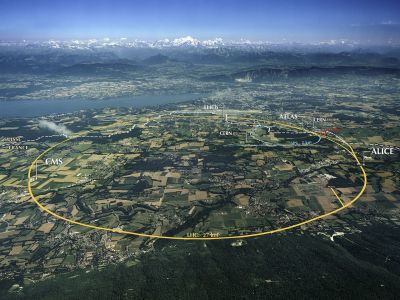Bottom quarks at the LHC

CERN Aerial View
By Maximilien Brice (CERN) (CERN Document Server) [CC BY-SA 3.0 (http://creativecommons.org/licenses/by-sa/3.0)], via Wikimedia Commons
By colliding heavy ions with free quarks, physicists hope to recreate the earliest moments of our Universe just after the Big Bang. In the aftermath of these heavy-ion collisions, jets coming from bottom quarks have been identified for the first time.
The Large Hadron Collider (LHC) at CERN switched from colliding protons to colliding nuclei of lead atoms once a year with the aim to reproduce matter as it was at the birth of the Universe. Back then, quarks were not bound up by gluons into protons and neutrons. Instead, these elementary particles roamed freely in what physicists refer to as quark–gluon plasma.
Funded by the EU, the project 'Particle flow in heavy-ion collisions with CMS' (PF4CMSHI) was devoted to the study of such heavy-ion collisions using the Compact Muon Solenoid (CMS) experiment. This general-purpose experiment built at the LHC can detect jets of quarks flying away from the collision point. In the framework of the project, jets coming from bottom quarks were observed for the first time.
PF4CMSHI scientists were able to distinguish these jets by accurately reconstructing the trajectories of hadrons. They adapted the tracking algorithms of the CMS for use in heavy-ion collisions and extrapolated all trajectories of hadrons back toward the collision point. Hadrons in jets initiated with the production of bottom quarks had originated further away, where the bottom quark had decayed.
The measurements were sufficiently accurate to also demonstrate that jets from bottom quarks degrade as a result of interactions with the hot dense plasma around the collision point. Project scientists revealed the dependence of this phenomenon( known as jet quenching(on the flavour of the decaying quark, something that has been predicted by theoretical models.
This discovery marks a significant step into the unknown. But the full potential of the CMS experiment in probing the quark–gluon plasma through heavy-ion collisions has yet to be unlocked. The PF4CMSHI project has strengthened Europe's presence in the CMS heavy ion group. This relative small group consists of about 100 physicists, mostly from the United States, and is opening new avenues for exploration at the LHC.
published: 2015-04-27

